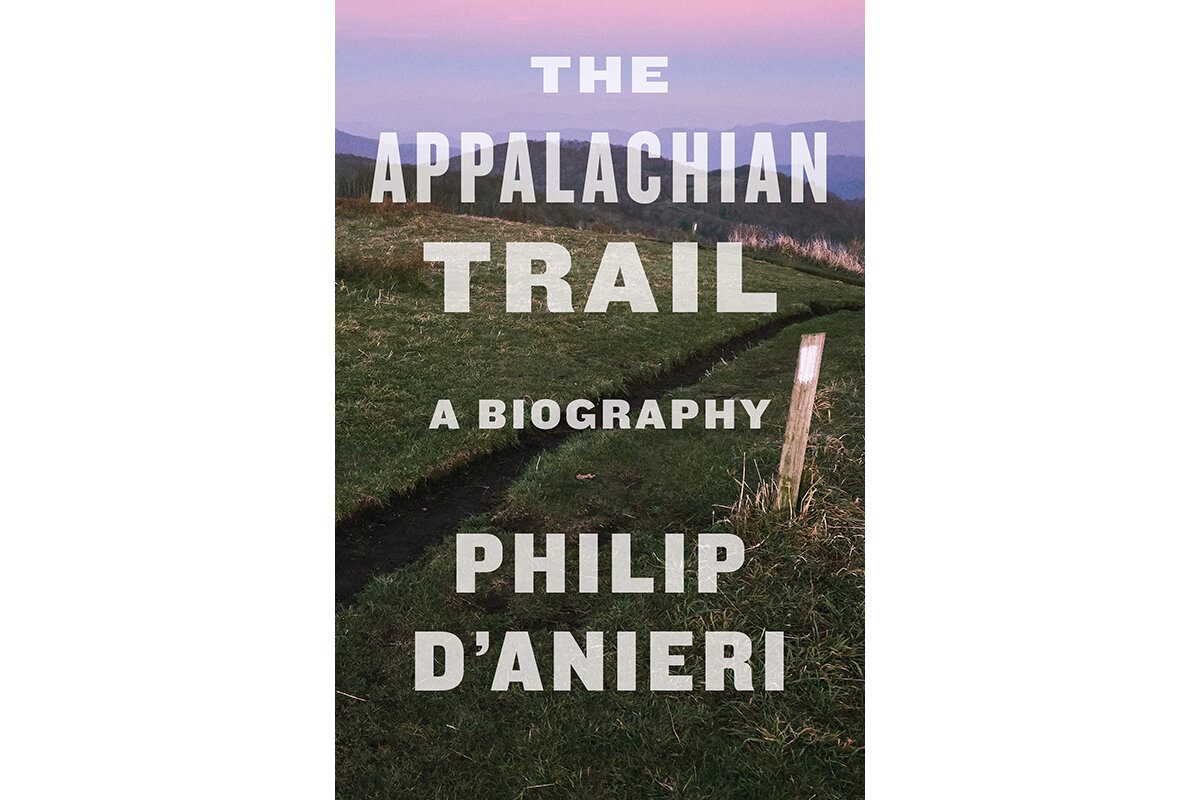Q&A with Philip D’Anieri, author of ‘The Appalachian Trail: A Biography’
Loading...
In the 84 years since its completion, the Appalachian Trail has exemplified the power of nature and nurture: We take care of the wilderness, and it repays us by feeding our souls and imaginations. Philip D’Anieri, an urban planning lecturer at the University of Michigan, explores its history in “The Appalachian Trail: A Biography.” He recently spoke with the Monitor.
Could you describe the Appalachian Trail and why it’s such a touchstone in American culture?
The trail runs roughly 2,100 miles over the Appalachian ridgeline from Maine to Georgia, over the highest land it can find wherever possible. When you’re on the trail, it’s practically endless: It feels like this portal into another world. These two qualities attract people whether they’ve hiked it or not. It’s so different from what’s around us in our day-to-day lives, and it invites you in for as long as you’re willing to experience it.
What has made it such a success?
The mountains are a couple of hours’ drive – and sometimes not even that – from the metropolitan areas of the East Coast. There was a huge population seeking an outdoor getaway, and a large pool of volunteers available to get the trail built.
You’re an urban planning specialist. What drew you to write about the trail?
Part of it was just a curiosity about “How did that get there?” But there’s a big component of planning in the trail’s history as well. The inventor of the trail, regional planner Benton MacKaye, was very interested in the balance between city, town, and country. In his imagination, the trail was part of a larger whole. I try to explore this connection.
What surprised you?
The diversity of landscapes the trail travels through is really intriguing. Yes, there’s remote wilderness and gorgeous mountaintop vistas. But there are also small-town main streets, and farmers’ fields, and even highway bridges. The trail reflects the complexity of the terrain it passes over, which to me makes it an even more interesting place.
What does the trail tell us about our evolving approach to nature?
What really stuck out to me is how many different versions of “nature” there are, and how much they’ve shifted over time. We often talk about nature as though it is permanent and timeless, and that’s why it offers such an attractive escape. But as our everyday world changes, so do the things we want to escape from. We wind up asking new and different things from nature.
How has this idea played out?
In the early 20th century when the trail got started, experiencing nature had an almost patriotic connotation. Camping was seen as a way to recapture the pioneer spirit, and outdoor life was seen as a kind of national renewal. By the 1960s and ’70s, that idea had been turned almost completely on its head. Spending time in nature was an act of protest, a separation from the mainstream, an attempt to find something real that had nothing to do with conventional American society. Now, the outdoors is something else again, a kind of backdrop that people use to build out their online identities.
What should people understand about the trail and its history?
It takes a lot of work to create and protect such a valuable resource. From the individual volunteers clearing pathway in the 1920s all the way up to the organizations that manage it in the present day, the trail doesn’t just happen. Yes, it’s a natural wonder, but it’s also a big and complex piece of park infrastructure, and it can only happen with committed people putting in long hours and making difficult decisions.






